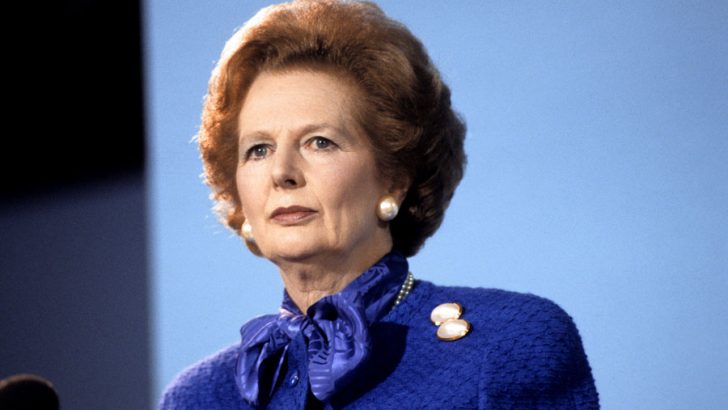With the box-office success of the movie The Iron Lady — Meryl Streep’s portrait of Margaret Thatcher — the career of the former British prime minister is being re-assessed on all sides.
Maggie Thatcher always elicited strong emotions: people loved her or hated her.
She is often heralded as the leader who revived capitalism, rescuing it from the strangle-hold of state socialism. She is also loathed for having ushered in a new era of capitalism, which seems now to symbolise so much financial greed.
Yet, although she believed in free enterprise and the market system, Maggie was never of the ‘loadsamoney’ culture.
The strict Methodism in which she grew up spurned greed as avidly as it damned sloth or squalor.
Work was the ethic most admired in her Lincolnshire childhood. Her father, Alderman Roberts, was a stern upholder of traditional Protestant virtues: thrift, duty, service to the community, hard work during the week and church thrice on Sundays, with no frivolous recreations — these were the home values.
Justified
So, although Maggie grew up with a strong commitment to free enterprise which she learned while serving in her father’s corner shop, she was never a fan of the city-slicker types, the greedy banks who rolled in undeserved bonuses, or the stock market gamblers who play the economy like a casino.
Maggie believed that financial reward was justified when it was earned, but she deplored the ‘something for nothing’ attitude.
As prime minister, she examined the household expenditure carefully at No. 10, and once sent back an expense claim for £19 for an ironing-board, to be borne by the taxpayer.
It wasn’t justified and she would pay for it herself, she wrote in the margin.
Like all individuals, Thatcher had her defects as well as her strengths, but her Methodist formation was very much part of her character, and that aspect is often overlooked.
When it came to money, she was straight as a dye, which is a characteristic regrettably not as widely honoured among the elites of our societies today, either in politics, business, or public service.
Shaky relations
It is now said to be ‘highly improbable’ that Pope Benedict will visit Ireland for the Eucharistic Congress in June. The Pope’s travel plans are complete for 2012 — Cuba and Mexico, Lebanon and the Ukraine are already firmly scheduled.
This is for the best. Relations between the Irish Government and the Holy See have been so shaky over the past year that it is wise to let matters lie fallow.
Tánaiste Eamon Gilmore got his protocols in a twist, anyway, by issuing a statement to the effect that if the Holy Father wished to make a request to visit Ireland he’d be welcome to make it. But the Pope does not make ‘requests’ to visit a country. He responds to invitations from the host faith community.
The current crop of Irish politicians are anxious to show how independent they are from the Vatican — to distinguish themselves from their predecessors, who often fell over themselves in their haste to curry favour with the Holy See.
Even Charlie Haughey was most particular about sending deferential messages to the Pope: not necessarily because he was the holiest of men, but because he had a shrewd instinct for power and prestige, and an understanding that small countries need friends in the wider world.
A visit from Pope Benedict to Ireland this year would mean the political class falling over themselves to show how coldly detached they can be while ordinary people would be concerned about the cost of the visit. Benedict is better off in Cuba, where he will receive a Caribbean welcome from Clan Castro and the ordinary faithful alike.
The Mohawk maiden
How gratifying that the Blessed Kateri Tekakwitha is to be made a saint: the ‘Mohawk maiden’ will be the first Native American saint ever canonised.
Blessed Kateri was born in 1656 in what is now upstate New York. She was converted to Catholicism by French Jesuit priests.
It took enormous courage for this young girl to follow her faith against the grain of her tribe but she was marked by devotion. She also suffered terribly from facial pox scars which disappeared from her visage soon after she died at the age of 24.
A native American boy was cured of a flesh-eating virus in 2006, and his healing has been attributed to Blessed, soon Saint, Kateri Tekakwitha.
In the 1920s and 30s, the Irish devotional magazines had a great fascination with Kateri Tekakwitha, ”the Pocohontas of the Catholic Church”.
Perhaps her life also illuminated the ‘other side’ of the ‘cowboys and injuns’ narrative — the exotic peoples of the Mohawk nation could also be our brothers and sisters in Christ.


 Mary Kenny
Mary Kenny Former British Prime Minister Margaret Thatcher
Former British Prime Minister Margaret Thatcher